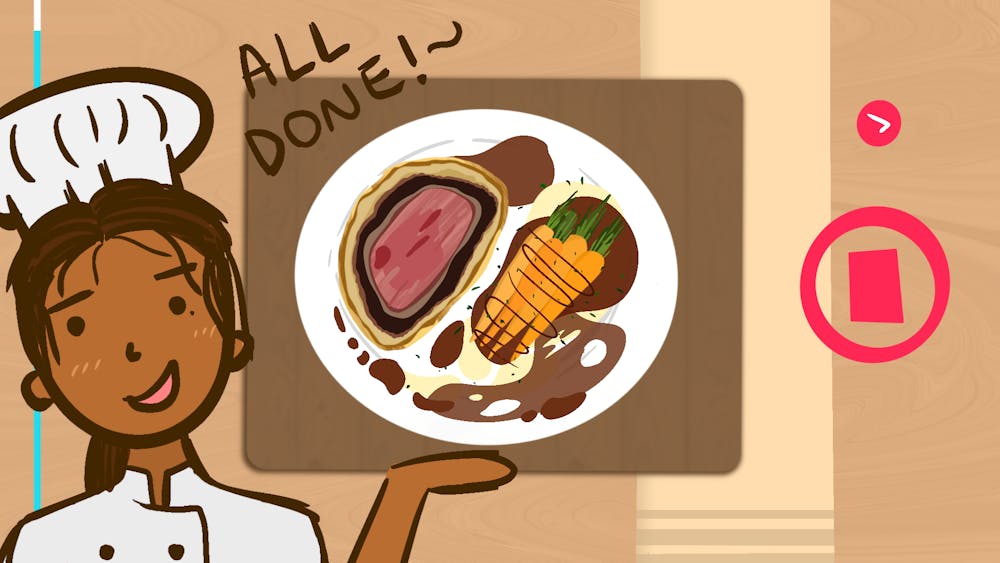When you think of a celebrity chef, maybe you think of Gordon Ramsey, Jamie Oliver, or Wolfgang Puck. The culinary industry has historically been and continues to be male–dominated. Women have recently began garnering followings through platforms like YouTube and TikTok. These social media platforms provide a way for people who have been traditionally underrepresented in (and overlooked by) the culinary industry to share their cuisines and cultures with the mainstream.
Historically, women have faced rampant sexual harassment and assault in the culinary world and continue to do so. Meghan McCarron writes for Eater that because cooking in the house has traditionally been seen as a woman’s duty, there has been “an effort to distance restaurant cooking from home cooking.” In fact, another article from Eater found that in 2017, only 21.6% of New York City Wine & Food Festival chefs were women.
But have attitudes shifted along with the growing popularity of cooking videos on social media platforms?
Taylor Lorenz wrote for the New York Times that “TikTok has also birthed a new generation of cooking stars who didn’t put in years in a professional kitchen or at a glossy food magazine.” The platform opens up an avenue for chefs and food content creators that would have otherwise had trouble breaking into the culinary industry.
Lorenz notes that TikTok cooking videos are very casual, as if you’re on a FaceTime call with the creator. This medium allows for a more personal touch, which is perhaps why those who have been underrepresented are now seeing success on social media platforms.
Tina Choi, who goes by @doobydobap, is a food creator and chef who found popularity through social media platforms. On her TikTok, which now has over 3.5 million followers, Choi shows recipes and gives us glimpses into her day. Her videos feel personal and, as Lorenz says, reminiscent of being on a FaceTime call with a close friend. Choi’s recipes demonstrate her Korean influence and background, creating a sense of comfort for those who have grown up eating Asian foods. Plus, it is refreshing to see an Asian American creator use the flavors of our childhood and show how we might be able to redefine them for ourselves. On the other hand, Choi’s recipes are also intriguing to people who may not have grown up on such a cuisine. These videos make “foreign” foods and flavors more accessible, which also seems to correlate with social media food creators’ successes.
Another name that recently became popular is Emily Mariko, who went viral in 2021 for her “salmon bowl,” a dish in which Mariko crushes up leftover salmon and mixes it with rice and sauces. Emily Petrarca writes for The Cut that one of the reasons why Mariko went viral is because her food “seems easy enough to make.” Like Choi, Mariko’s recipe videos make cooking more accessible—anyone can follow along by crushing up salmon and mixing it into some rice.
However, Petrarca also proposes that another reason Mariko became famous is because she’s pretty, though she “doesn’t seem to be trying too hard.” Regardless, women who found fame through social media, like Choi and Mariko, still produce content aside from food videos, although that doesn’t seem to be the case for many of their male peers.
@peterspasta, a TikTok creator who recently went viral partly due to his series “Making a Batch of Pasta Dough but the Egg Yolks Double Every Time,” skyrocketed through a gain of over 3.9 million followers. His videos show him making pasta dough in extremely large quantities, which he then donates to his community. Scroll through his account, and there is not a single video vlogging his day or showing non–food–related content. While Peter is most definitely serving his community, he does not face the same sort of expectation to reveal more of his personal life as his female counterparts do.
Mariko, on the other hand, has a few non–food–related videos interspersed throughout her regular cooking–oriented feed, whether it is trying on dresses or getting ready for her day. There is a certain pressure for female creators to not only make food–related content but also to be a lifestyle creator. It’s almost as if cooking is not enough; cooking can be a profession for someone like Peter's Pasta but not for Mariko.
Maybe Mariko versus Peters Pasta is not a completely fair comparison; Mariko has, after all, become somewhat of a public figure. But how did this happen from a video of a salmon rice bowl? Again, it is the expectation for a woman to do more and be more than a cook if they are to become successful online.
Sure, this may not be universal—not every single male creator posts solely food content, and there are surely female creators who don’t post the occasional vlogs. However, this pattern seems more common than not.
Although social media has given a platform to women making food–related content, there’s still a lot of work to be done in the culinary industry to make it truly inclusive. TikTok’s audience seems to continually set expectations for “more” from female chef creators. As of now, this spotlight on female chefs is only a step in the right direction.







